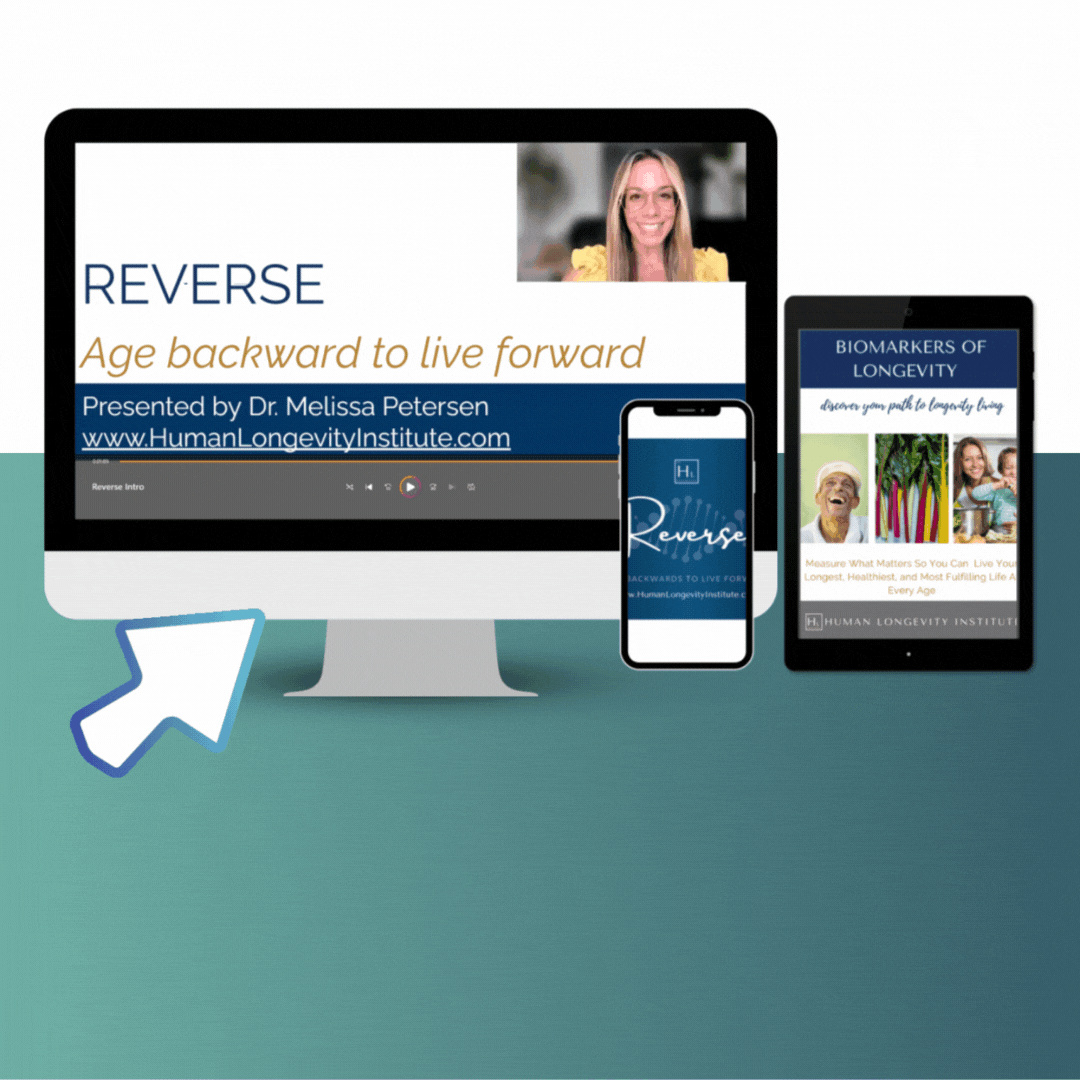Available on Spotify – Amazon Music
In today’s episode we will explore the role that respiration, oxygen and carbon dioxide play in slowing down the rate and pace of biological aging for enhanced vitality. You will learn the exact breath rate that increases oxygen saturation, immune, cardiac, neurological and endocrine function while also enhancing longevity. And you will experience 3 key breathing exercises and respiration practices to increase your health capacity so you can live better, longer beginning today.
Show sponsor: BrainTap. Backed by neuroscience and research, BrainTap uses neuro-algorthyms and audio training and light technology to optimize brainwave function, improve focus, mood, memory, sleep, performance and overall wellbeing.
To get a FREE 15 day trial, click here and start Braintapping today.
Show Notes and Links:
Today, we’re going to tap into what I’m going to call a secret of longevity. It’s something that is often overlooked and seldom discussed yet. It is a fundamental, essential ingredient to life itself. During this episode today, we’re going to take a common sense approach and filter in the research to leave you with a few tactical practical solutions that you can apply right now, beginning today in your everyday life, so that you truly can have another way to slow down the rate and pace of biological aging to live better longer.
What is this thing that I’m talking about?
Well, I’m going to take you quickly back to a childhood memory, and I’m going to ask you to recall if you ever played the game where you timed yourself, holding your breath, how long could you go 15,30, maybe you were the person that went 45, even 50 seconds. But what inevitably happened was the body gave you the cue to take a deep breath. This is because the need for oxygen is the key to life.
It is what ushers us in at birth. It is what is the last form to expel from our body when we transition beyond this form.
Oxygen air, it is essential for life, and it is the key ingredient that every cell in your body needs to produce energy so that you can heal. You can repair, you can meet the demands of everyday life, and now you might be saying, but Melissa, come on, this is easy. We all breathe. Like we got this covered. Well, yes and no. Yes, we do breathe automatically because this delicate balance of oxygen and carbon dioxide, having the right amount of both to diffuse into the lungs, through the capillaries, into the bloodstream, to be picked up by the hemoglobin circulated throughout the body, to be delivered to the trillions of cells that make up you and me, it is all about having the oxygen come in the right amount of carbon dioxide, build up as a signal to say, okay, the door’s going to open to bring the oxygen in and the carbon dioxide out.
As we chronologically age and just move through life, there are factors that begin to inhibit or interfere with this experience.
If we truly want to understand how to have something free, accessible, and natural and essential to life that we can begin to leverage ourselves, that can truly make a difference in our overall health and energy and vitality. Then when you want to know, and that’s why we’re talking today about oxygen and the few simple things that you can begin to do to get more of it in more deliberate to the tissue and truly energize your body in a way that you’re better able to meet life’s daily demands.
Let’s first start with an interesting understanding that as the oxygen comes in and the carbon dioxide goes out, we have our first point of potential imbalance.
This imbalance between oxygen and carbon dioxide typically happens in modern-day living is with the rate and the pace of our breathing.
As we start to breathe faster, shorter shallower, the body is actually saying, “hey, I am oxygen deprived. I need more oxygen. and even though we think we’re breathing, we think we’re, I’m breathing faster. I’m taking more in –
Yet- If we are breathing in and out through our mouths, if we are talking a lot throughout every day, we can be depleting our body faster of carbon dioxide. This is because, there’s not as much in the body to signal the oxygen to diffuse in. So we’re actually going into an oxygen-deficient state.
- Step one, what we understand is that we can measure the level of oxygen. And we can begin to simply and effectively help our body to get more of it and bring that oxygen and carbon dioxide into balance.
So here’s what we know from the research. The way to understand how much oxygen you have in your system is through a simple measurement called oxygen saturation.
Luckily today, most of our wearable technology is able to read this. Iif you’ve got a Fitbit and apple, a whoop Garmin, any of those types of devices that you wear, it’s naturally able to measure this. You could also go to any pharmacy or go online and order what’s called a pulse oximeter, It goes on the end of your fingertip and it’s going to measure both your resting heart rate, as well as your oxygen saturation.
Now a normal level is 96 to a 100% optimal levels are 98 to a 100% saturation, meaning you’re breathing in and the oxygen that’s coming in is actually properly diffused in that lung space and coming in and getting to the cells into the tissue.
When we see a lower oxygen saturation, that’s indicating that our cells, our tissues are going into more of a potentially a hypoxic state where they’re not getting as much oxygen as they need to be able first and foremost to produce energy.
That’s when we start to feel things like fatigue and brain fog and confusion, and we’d see that it takes longer for our cuts to heal. We have less energy to be able, just to kind of do normal things. This is an early indication, you know, we might have some, hesitation or difficulty with our breathing. So you may want to begin with first measuring your oxygen saturation rate.
What we know in the literature is that an oxygen saturation of 95% and lower is correlated with all cause mortality. What this simply means is if you’ve got a lower oxygen saturation versus having it in the normal optimal range, you have a higher likelihood, a greater chance of death than those that have a higher oxygen saturation.
How to Improve Oxygen Saturation?
In a an interesting study looking at 2 groups to determine if oxygen saturation could be impacted by rate of respiration, they found that in just 15 minutes the participants that were able to bring their respiration rate down to six breaths per minute by following a metronome. raised their oxygen saturation by 7%.
This is significant. You can use a breath pacer app or metronome to try this yourself.
- Step 2: I want to invite you to become curious about how you breathe. Are you breathing fast, short, and shallow in and out through the mouth
- If you are, is to simply say, Hmm, can I begin to breathe only, in and out through my nose. This eliminates mouth breathing because that’s going to imbalance that carbon dioxide to oxygen ratio. And dump too much carbon dioxide too fast. Remember, this can impair the oxygen from really getting in to the cells, to the tissue.
- Next, can you breathe slower? Begin by just noticing what you notice, you can time yourself and get a starting point. From there you can consciously and gently without strain or oxygen deprivation, breathe slightly slower. Once you try this, then you can move to using a breath pacer. To get the full benefits of slowing down to 6 breaths per minute over time.
Impaired Respiratory Function
As we chronologically age, if we’re kind of living the standard, you know, Western lifestyle, high stress, busy, processed foods, what begins to happen as we go into a more inflammatory state over time. Stress accumulated because we have more demands on our system, not as many resources to meet those demands. So we’re not recovering as fully. And we’re staying in more of a chronic inflamed state.
This chronic inflammation begins to really have a lot of systemic effects, but specifically to oxygen intake, it affects our respiratory system. There is a reduction in our lung capacity.
Now, the only way to get more oxygen into the cell is it needs surface area to diffuse over. So we need lung capacity. And this means our lungs being able to expand fully like balloons and contract.
And this entails our rib cage. Being able to stay flexible and pliable, which as we are more inflamed becomes more fibrous. We have a less capacity. We’re not expanding as much. The muscle under the lungs called the diaphragm. doesn’t move as much. We’re not kind of working as often in as fully as we should be. So we have limited capacity. However, this is correctable just because you may be currently experiencing this doesn’t mean that it’s all over. Everything is malleable in the body. The moment we know, we know better, we can do better.
To begin to improve lung capacity means creating more space. A simple way to begin is first by practicing what is called diaphragmatic breathing, or belly breathing.
- Breathe low down into the belly. Let the breath fill the lungs as if you are intentionally trying to stretch out the ribs and belly on the in breath to then relax and fall on the out breath.
You want to think about those lungs, expanding that diaphragm lowering and the belly going out. So everything’s kind of expanding on the, in breath and relaxing and coming back in on the out-breath. Just by beginning to kind of stretch that area and allowing the breath to come in, instead of thinking, you have to hold your stomach in and stay nice and tight and tall, we want to begin to relax and let that breath come in to go low.
Your little mantra for today is to let the breath go low, to breathe, slow in and out through the nose.
And if you want to become even more proficient in this practice, so to speak, there are many different breathing exercises.
Box Breathing
It’s a simple place to start to kind of get into that slower respiratory rate is what’s called a simple box breath where you gently breathe in through the nose for four counts.
You hold the breath for four counts. You gently breathe back out of the nose for four counts and you hold for four counts.
Now there are many others beyond that, but it’s a really great, simple place to begin to start. This also is going to help your autonomic nervous system begin to put your body out of fight or flight and into more of a rest and digest and reset. And that’s the place that we need to go to actually start to heal, recover and increase overall resilience and capacity in the body.
It’s as simple as beginning with your breath. And there are many levels to this that we can begin to go deeper. We can get more intentional. We can use exogenous tools like hyperbaric oxygen chamber. But before we go to the big stuff, it’s not about trying to do something outside of ourselves.
What I hope to impart to you today is the knowledge and the awareness that you have, everything that you need right now to begin to make radical shifts in how your body is expressing and experiencing healing, health and thriving. And when we can begin to discharge some of the excess, the rapid breathing, the tension, the tightness, and we can begin to just kind of settle into the moment, even if it’s just for a few moments a day, it begins to have this cumulative effect where we’re giving our body more, ease more of what it needs to come into the cell to produce energy. As the body has more energy from more oxygen able to come in and to be utilized. Now we’re better able to clean up waste. We’re better able to repair. We’re better able to replicate and to heal. And these are the essential components that allow us to truly slow down that rate and pace of inflammation that contributes to biological aging.
So in the show notes today, I’m going to have links to these incredible research studies. You’re going to learn about these different techniques and listen, if you like this, and you want to take a little deeper dive. I actually have a free mini course over at humanlongevityinstitute.com and it’s under our resource tab there. You’re able to scroll down and you’ll see our free mini breath course. And it’ll take you a little deeper. It’ll give you some more. And the last practice I want to give you today is a great thing that you could do anytime, anywhere, especially as you’re kind of moving through the hurriedness of any day, what naturally happens is as we get more distressed, we kind of hold that tension and we start to limit the amount of oxygen coming in. So a quick way that our body helps us to reset. This is by naturally sighing.
Reset Respiration with a Physiological Sigh
It’s called a physiological sigh, and the way that this works is it helps to increase the little aviloar sacs in our lungs, so that we increase that surface area. And we begin to readily absorb oxygen back in, and you do this by taking two simple, quick inhales through the nose, followed by one sigh out through the mouth.
Now, yes, I just breathe out through the mouth, which can release that carbon dioxide, but this is a reset breath, not how you’re going to breathe throughout the day. This is when you’re feeling, you’re feeling your heart rate increase. You’re feeling a sense of stress in your system. This is a quick way to re oxygenate to re-energize, to rebalance out of fight or flight into rest and digest to bring that oxygen in and to balance that stress response.
When we breathe in, our heart rate increases, when we breathe out, it slows down so when you do the physiological sigh, it lowers your heart rate.
And what we know from the research is that a heart rate above for every four points over 64 beats per minute of a resting heart rate increases our rate and risk of cardiovascular disease. The higher that resting heart rate elevates the greater and greater risk of all cause mortality. Meaning when we can begin to slow down our respiration on a more constant basis, we’re beginning to lower our resting heart rate, which is also going to lower. Our blood pressure is going to help to increase immune function, endocrine function, cognitive function, cardio-metabolic function. It has a systemic effect throughout the body. This is a good thing. So simply by breathing slow, low in and out through the nose, you’ll start to lower the resting heart rate.
HRV and Longevity
As you lower your HR, you will simultaneously, as we know from research, you will also begins to increase. your heart rate variability.
HRV has been found in the studies, especially when looking at centenarians, they have a higher heart rate variability among any other demographic. It correlates absolutely with every bit of data that shows higher heart rate variability increases. longevity, our overall health span and lifespan. Meaning living better, longer, can occur just by breathing slower to lower heart rate while increasing HRV.
The best place to start by lowering our heart rate by moving out of fight or flight into rest and digest, meaning toggling that nervous system by using these breathing tools. They all activate the parasympathetic system and also help to get more oxygen into the cells. This gives the body more of what the need to make the energy to meet the demands of life.
So now today you’ve got several tools to begin to practice, to play with. If you want to go deeper, go get that free course over athumanlongevityinstitute.com, go down to our resources, find that free breath class. And so now my friends today, it’s your turn to go out, apply so that you truly can live better longer.
Once again, I want to say thank you to BrainTap for being our sponsor of today’s show. And you want to grab that free 15 day trial because on their app platform that actually have the audio train and treatment sessions that are going to help to increase heart rate variability and decrease that resting heart rate. And they’re going to help to give you these beautiful sessions to entrain that breath at a lower and slower respiratory rate. Thanks again for tuning in. So now go like share subscribe, and, I appreciate you being a part of this community until next time. My friend I’m Dr. Melissa Petersen continue to thrive.
#longevity #healthspan #lifespan #biologicalaging #oxygensaturation #respirationrate #breathingexercises #lungcapacity #breathwork #wellbeing #HRV #centenarians #humanlongevityinstitute #humanlongevitypodcast #humanlongevity
References:
1. Russo MA, Santarelli DM, O’Rourke D. The physiological effects of slow breathing in the healthy human. Breathe (Sheff). 2017 Dec;13(4):298-309. doi: 10.1183/20734735.009817. PMID: 29209423; PMCID: PMC5709795.
2. Vold ML, Aasebø U, Wilsgaard T, Melbye H. Low oxygen saturation and mortality in an adult cohort: the Tromsø study. BMC Pulm Med. 2015 Feb 12;15:9. doi: 10.1186/s12890-015-0003-5. PMID: 25885261; PMCID: PMC4342789.
3. Bilo G, Revera M, Bussotti M, Bonacina D, Styczkiewicz K, Caldara G, Giglio A, Faini A, Giuliano A, Lombardi C, Kawecka-Jaszcz K, Mancia G, Agostoni P, Parati G. Effects of slow deep breathing at high altitude on oxygen saturation, pulmonary and systemic hemodynamics. PLoS One. 2012;7(11):e49074. doi: 10.1371/journal.pone.0049074. Epub 2012 Nov 12. PMID: 23152851; PMCID: PMC3495772.
4. Eoin P. Cummins ,Moritz J. Strowitzki, and Cormac T. Taylor Mechanisms and Consequences of Oxygen and Carbon Dioxide Sensing in Mammals. 09 DEC 2019https://doi.org/10.1152/physrev.00003…
5. Hernández-Vicente A, Hernando D, Santos-Lozano A, Rodríguez-Romo G, Vicente-Rodríguez G, Pueyo E, Bailón R, Garatachea N. Heart Rate Variability and Exceptional Longevity. Front Physiol. 2020 Sep 17;11:566399. doi: 10.3389/fphys.2020.566399. PMID: 33041862; PMCID: PMC7527628.






